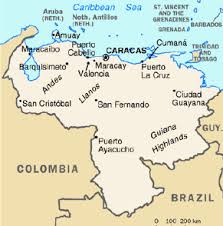10 Most Dangerous Places On Earth

PART 1 of a Series
At first glance, one would immediately think Iraq, Israel, West Bank, Iran, etc....
When you stop to think about it, however- there are many places on Earth that the uninitiated would probably never think of as being quite dangerous to exist in or travel to. By browsing this site you'll see that every single day brings some horrific and startling news of bombings, social unrest and general chaos in seemingly interesting and beautiful places to travel.
Granted, quite a few of them are probably quite nice,but at what point do we distinguish between outright dangerous, and simply a place to remain vigilant with a watchful eye?
Feel free to chime in with your thoughts on this!
How would one begin to categorize the term "Dangerous"?
Social Unrest?
Governmental instability?
The number of volcanoes?
The number of active volcanoes ?
The number of people who have died in both earthquakes and volcanoes?
Propensity for Hurricanes and/or Tsunamis?
High Crime Rates?
How are you going to make your decision?
Here are just a few shocking factors to consider in this first part of a series we'll be adding to every couple days this month:
SEATTLE, WASHINGTON
Have you ever wondered what it would be like to be melted by volcanic lava? How about experiencing an earthquake and feeling your legs start to turn into jelly? Well, in Seattle and Western Washington it has been more common than you might think. Currently there are 10 major volcanoes, both active and extinct. In Washington a great volcanic eruption could occur from the gigantic Mt. Saint Helens which killed 57 people throughout the years. Many people have also died by taking the risk of skiing or boarding and climbing various snow covered mountains in the region while they are considered dangerous. If you thought volcanoes were bad- wait till you hear about Washington’s earthquakes. During the past 125 years there have been over 20 damaging earthquakes!
JAPAN
Home of sushi, Hello Kitty, the bullet train, and some of the world’s deadliest natural disasters. There are around 90 active volcanoes and numerous dormant volcanoes. There are about 6-10 eruptions a year. The famous Mt. Fuji erupted 200 years ago, lasting three days with subordinated lava flow and small pyroclastic flow. The Unzen volcano was also a deadly one. The volcano collasped in 1792, killing 14,300 people and causing a unexpected tsunami. Two earthquakes happened this year, ranging from around 5.0- 5.1 magnitude. The major erathquake that destroyed one- third of Tokyo and most of Yokohama. It was an 8.3 magnitude one, killing 143,000 people. Another dangerous one - a 6.9 magnitude earthquake that hit Kobe Japan, killed 5,200 and injured 26,800 people.
SUDAN
On 30 August 2006, Sudanese security officials began seizing laptop computers from persons entering the country as part of new security measures in Khartoum. Security sources are claiming the laptops are searched and returned within one day in an effort to keep pornographic films and photographs from entering the country. Aid workers, businessmen, journalists and U.N. officials are concerned about sensitive and confidential information being put in jeopardy.
TAIWAN
Dozens of protesters gathered outside of the legislative building in Taipei on 31 August 2006 to demand the resignation of President Chen Shui-bian. There were no reports of violence or injuries at the protest. There are increasing calls for Chen's resignation and one anti-government group is expected to launch an indefinite protest on 1 September in New Park, which is located near the Presidential Office. The American Institute in Taiwan issued a Warden Message on 30 August concerning upcoming protests.
To be continued........
















